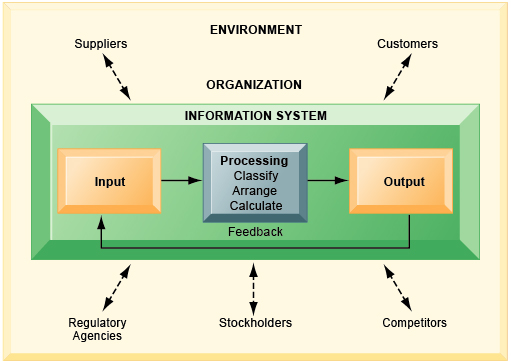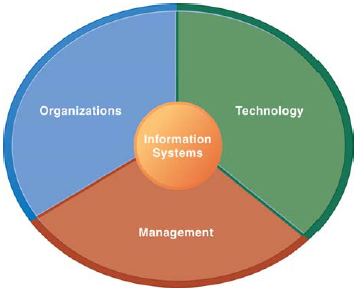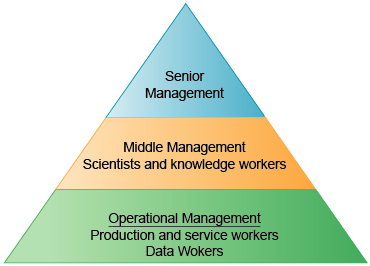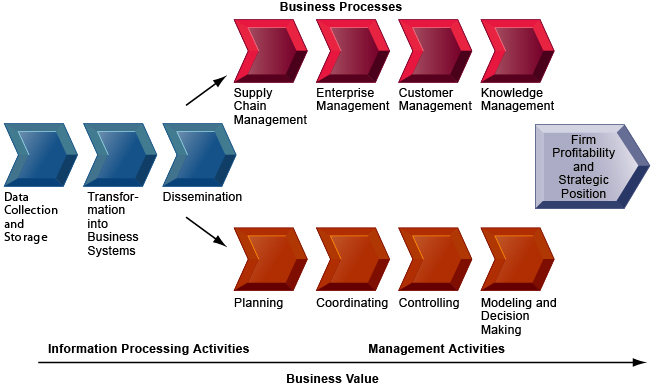Mẹo Hướng dẫn What ensures a system is functioning correctly and providing accurate information? Chi Tiết
Hoàng Văn Bảo đang tìm kiếm từ khóa What ensures a system is functioning correctly and providing accurate information? được Cập Nhật vào lúc : 2022-11-26 09:52:03 . Với phương châm chia sẻ Mẹo Hướng dẫn trong nội dung bài viết một cách Chi Tiết 2022. Nếu sau khi đọc tài liệu vẫn ko hiểu thì hoàn toàn có thể lại phản hồi ở cuối bài để Admin lý giải và hướng dẫn lại nha.
Perspectives on Information Systems
An information system is a set of interrelated components that collect or retrieve, process, store, and distribute information to support decision making and control in an organization. Information systems can also be used to analyze problems, visualize complex subjects, and create new products.
Nội dung chính Show- Which factor ensures your IT systems are functioning correctly and providing accurate information a reliability B scalability C availability D accessibility?Which factor determines the right to access different types of IT system and information?Which factor determines when your IT system will be available for knowledge workers to access 1 point?Which factor represents how well your system can adapt to increase demand?
Information is data, or raw facts, shaped into useful form for humans.
Figure 1-3

FIGURE 1-3 DATA AND INFORMATION
Raw data from a supermarket checkout counter can be processed and organized to produce meaningful information, such as the total unit sales of dish detergent or the total sales revenue from dish detergent for a specific store or sales territory.
Figure 1-4

FIGURE 1-4 FUNCTIONS OF AN INFORMATION SYSTEM
An information system contains information about an organization and its surrounding environment. Three basic activities�input, processing, and output�produce the information organizations need. Feedback is output returned to appropriate people or activities in the organization to evaluate and refine the input. Environmental actors, such as customers, suppliers, competitors, stockholders, and regulatory
agencies, interact with the organization and its information systems.
Computer literacy focuses primarily on knowledge of information technology. Information systems literacy, the understanding of information systems, includes a behavioral and technical approach to understanding the broader organization, management, and information technology dimension of systems and their power to provide solutions. The field of management information systems (MIS) tries to achieve this broader information systems literacy.
Figure 1-5

FIGURE 1-5 INFORMATION SYSTEMS ARE MORE THAN COMPUTERS
Using information systems effectively requires an understanding of the organization, management, and information technology shaping the systems. An information system creates value for the firm as an organizational and management solution to challenges posed by the environment.
The key elements of an organization are its people, structure, business processes, politics, and culture. An organization coordinates work through a structured hierarchy and formal standard operating procedures. Managerial, professional, and technical employees form the upper levels of the organization's hierarchy while lower levels consist of operational personnel.
Figure 1-6

FIGURE 1-6 LEVELS IN A FIRM
Business organizations are hierarchies consisting of three principal levels: senior management, middle management, and operational management. Information systems serve each of these levels. Scientists and knowledge workers often work with middle management.
Experts are employed for the major business functions: the specialized tasks performed by organizations, which consist of sales and marketing, manufacturing and production, finance and accounting, and human resources.
An organization coordinates work through its hierarchy and business processes. These processes may be documented and formal, or informal, unwritten work processes, such as how to handle a telephone call.
Each organization has a unique culture, or fundamental set of assumptions, values, and ways of doing things, that are accepted by most of its members. Parts of an organization's culture can be found in its information systems. For example, UPS's organizational focus on customer service can be found in the package tracking system available to customers. Information systems may also reflect the organizational politics or conflicts that result from differing views and opinions in an organization.
Information systems are also a key component in the ability of management to make sense of the challenges facing a company and in management's ability to create new products and services, manage the company, and even re-create the organization from time to time.
Information technology is one of the many tools used by management to cope with change. A firm's information technology (IT) infrastructure is a technology platform or foundation on which a firm can build its information systems. IT infrastructure consists of:
- Computer hardware: The physical equipment and computing devices used for input, storage, processing, output, and telecommunicationsComputer software: The detailed, preprogrammed instructions that control and coordinate the computer hardware componentsData management software: The software governing the organization of data
on physical storage mediaNetworking and telecommunications technology: Hardware and software used to link the various pieces of hardware and transfer data from one physical location to another; a computer network links two or more computers together to share data, such as files, images, sounds, video, or share resources, such as a printer.
The World Wide Web is a service provided by the Internet that uses universally accepted standards for storing, retrieving, formatting, and displaying information in a page format on the Internet. Web pages contain text, graphics, animations, sound, and video and are linked to other Web pages. The Web can serve as the foundation for new kinds of information systems such as UPS's Web-based package tracking system
From a business perspective, an information system is an important instrument for creating value for the firm. Information systems enable the firm to increase its revenue or decrease its costs by providing information that helps managers make better decisions or that improves the execution of business processes.
Every business has an information value chain in which raw data is systematically acquired and then transformed through various stages that add value to that information. The value of an information system to a business, as well as the decision to invest in any new information system, is, in large part, determined by the extent to which the system will lead to better management decisions, more efficient business processes, and higher firm profitability.
Figure 1-7

FIGURE 1-7 THE BUSINESS INFORMATION VALUE CHAIN
From a business perspective, information systems are part of a series of value-adding activities for acquiring, transforming, and distributing information that managers can use to improve decision making, enhance organizational performance, and ultimately increase firm profitability.
Some firms achieve better results from their information systems than others. Studies of returns from information technology investments show that there is considerable variation in the returns firms receive. Reasons for lower return on investment include failure to adopt the right business model that suits the new technology or seeking to preserve an old business model that is doomed by new technology.
Figure 1-8

FIGURE 1-8 VARIATION IN RETURNS ON INFORMATION TECHNOLOGY INVESTMENT
Although, on average, investments in information technology produce returns far above those returned by other investments, there is considerable variation across firms.
Source: Erik Brynjolfsson and Lorin M. Hitt, "Beyond Computation: Information Technology, Organizational Transformation and Business Performance." Journal of Economic Perspectives14, no. 4 (Fall 2000).
Complementary investments include:
- Organizational
assets: These include a supportive business culture that values efficiency and effectiveness, an appropriate business model, efficient business processes, decentralization of authority, highly distributed decision rights, and a strong information system (IS) development team.Managerial assets: These include strong senior management support for change, incentive systems that monitor and reward individual innovation, an emphasis on teamwork and collaboration, training programs,
and a management culture that values flexibility and knowledge.Social assets: These are not made by the firm but by the society large, other firms, governments, and other key market actors, such as the Internet, educational systems, network and computing standards, regulations and laws, and the presence of technology and service firms.
Which factor ensures your IT systems are functioning correctly and providing accurate information a reliability B scalability C availability D accessibility?
Reliability means making systems work correctly, even when faults occur.Which factor determines the right to access different types of IT system and information?
User permissions determine which resources the user gains access to and also any other access rights that are linked to the user, such as during which hours the user can access the resource and how much of the resource the user is allowed to consume.Which factor determines when your IT system will be available for knowledge workers to access 1 point?
Solution(By Examveda Team) Availability factor determines when your IT system will be available for knowledge workers to access.Which factor represents how well your system can adapt to increase demand?
Scalability describes an organization's capacity to adapt to increased workload or market demands. Tải thêm tài liệu liên quan đến nội dung bài viết What ensures a system is functioning correctly and providing accurate information?
